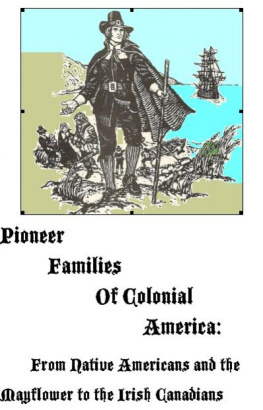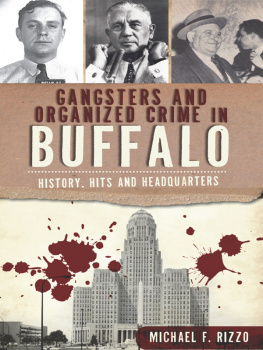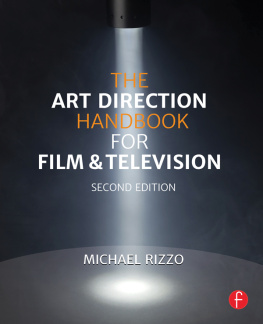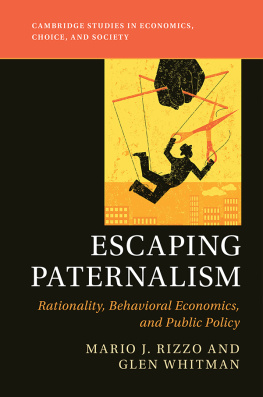Thank you for downloading this Scribner eBook.
Join our mailing list and get updates on new releases, deals, bonus content and other great books from Scribner and Simon & Schuster.
C LICK H ERE T O S IGN U P
or visit us online to sign up at
eBookNews.SimonandSchuster.com
We hope you enjoyed reading this Scribner eBook.
Join our mailing list and get updates on new releases, deals, bonus content and other great books from Scribner and Simon & Schuster.
C LICK H ERE T O S IGN U P
or visit us online to sign up at
eBookNews.SimonandSchuster.com
Contents
For my family
Acronyms
DCI: | Director of Central Intelligence |
DNI: | Director of National Intelligence. A position created by Congress in 2004 to serve as the head of the U. S. intelligence community. |
DOD: | U. S. Department of Defense |
DOJ: | U. S. Department of Justice |
NSA: | National Security Agency |
NSC: | National Security Council |
OLC: | Office of Legal Counsel, U. S. Department of Justice |
CENTRAL INTELLIGENCE AGENCY
CTC: | Counterterrorist Center, DO/NCS. |
DO: | Directorate of Operations, CIA. The CIAs clandestine service, responsible for all covert activities. |
EUR: | Europe Division of the DO/NCS. |
LA: | Latin America Division of the DO/NCS. |
Langley: | A shorthand reference to the location of the CIA headquarters compound in Virginia. |
NCS: | National Clandestine Service, CIA. The DOs new name as of 2005. |
NE: | Near East Division of the DO/NCS. |
NHB: | New CIA headquarters building, constructed as an adjunct to the OHB in the 1980s. |
OCA: | Office of Congressional Affairs, CIA. |
OGC: | Office of General Counsel, CIA. |
OHB: | Original CIA headquarters building, constructed in the 1950s. |
OIG: | Office of Inspector General, CIA. |
OPA: | Office of Public Affairs, CIA. |
OSS: | Office of Strategic Services, the World War II U. S. intelligence organization. Predecessor entity to the CIA. |
SAD: | Special Activities Division of the DO/NCS. The CIAs paramilitary component. |
CONGRESS
HPSCI: | House of Representatives Permanent Select Committee on Intelligence. |
SASC: | Senate Armed Services Committee. |
SSCI: | Senate Select Committee on Intelligence. |
MISCELLANEOUS ACRONYMS AND TERMS
EITs: | Enhanced Interrogation Techniques. |
Finding: | A document signed by the president of the United States authorizing the CIA to conduct a covert action program. |
Gitmo: | Guantanamo Bay terrorist detention facility. |
HVDs: | High Value terrorist Detainees. |
HVTs: | High Value terrorist Targets. |
KSM: | Khalid Shaeikh Mohammad, the CIAs highest-level post-9/11 detainee. |
MON: | Memorandum of Notification, a document signed by the president amending or expanding a previous Finding. |
INTRODUCTION
The Tale of the Torture Tapes
In early November 2010, the Justice Department announced its decision not to bring obstruction-of-justice charges against the CIA officials who had been involved in the decision, five years earlier, to destroy videotapes depicting the Agencys 2002 interrogation of an Al Qaeda operative named Abu Zubaydah. He was not just any terrorist thug. Zubaydah was a senior figure in the Al Qaeda hierarchy at the time of the 9/11 terrorist attacks, and he had been the CIAs first significant catch in the post-9/11 era. As such, he was also the first high-level Osama bin Laden lieutenant to be spirited off to one of the Agencys newly constructed covert detention facilitieswhat would come to be infamously known around the world as the CIAs secret prisons. Zubaydah had another dubious distinction: He was the first CIA detainee ever to be waterboarded. The CIA had captured it all on videotape. Three years later, the Agency burned the tapes.
The Justice Department criminal investigation into the tapes destruction, which lasted almost three years, was led by John Durham, a career federal prosecutor from Connecticut brought in specifically for the task. He was appointed in December 2007, shortly after the New York Times broke the story in a series of page 1 articles by Mark Mazzetti and Scott Shane. The series ignited an immediate firestorm in the media and Congress. As the Times accurately reported, no one in the CIA had ever told anyone in Congress that it had destroyed the tapes.
It was a hell of a story about a hell of a mess. And I knew it better than anyone, since I was the only member of the CIAs top leadership to have been part of the episode from the beginning to just about its end. I was the Agencys chief legal advisor for most of the eight years encompassing the story. The tale of the tapes destruction and its aftermath bedeviled me right up to the time of my retirement from the CIA in December 2009, after more than thirty years of service. The saga ended for me only when Justice announced there would be no indictments.
For the first three years, I fended off repeated entreaties from my Agency colleagues that I approve destroying the tapes, only to have them go behind my back and destroy them anyway in 2005. Then, after the story exploded in the media, I was the only CIA official to be hauled before Congress and grilledaloneby two dozen angry lawmakers. Two years later, in September 2009, I had to testify for seven hours before a grand jury convened by the prosecutor, Durham.
The case was still hanging over me when I left the Agency for good two months later. In a long career fraught with dealing with controversies, it was the final one, and it was unfinished business. And so I could not drift gently, at long last, into a peaceful retirement. Would I be called back to testify before Congress? Before the grand jury? Would I be prosecuted for something I said, or something I did, somewhere along the way?
The November 2010 Justice Department announcement that there would be no indictments brought me a mixed range of emotions. First, of course, I felt a huge sense of belated relief. At the same time, it seemed oddly anticlimacticby November 2010, the tapes destruction was old news, a distant if unpleasant memory.
Finally, it all struck me as very ironic. The entire affair, long and tortuous as it turned out to be, had begun for me way back at a time when I thought I was getting out of the line of fire at the CIA.

In October 2002, my nearly one-year tour of duty as acting general counsel was coming to a close. The Senate had just confirmed Scott Muller as the new CIA general counsel.
Next page














